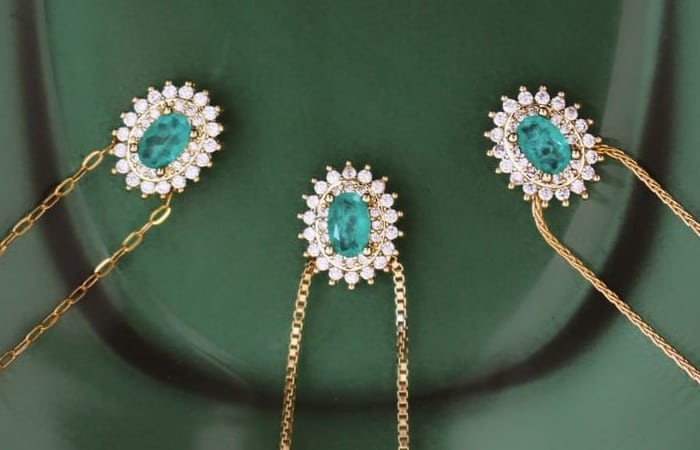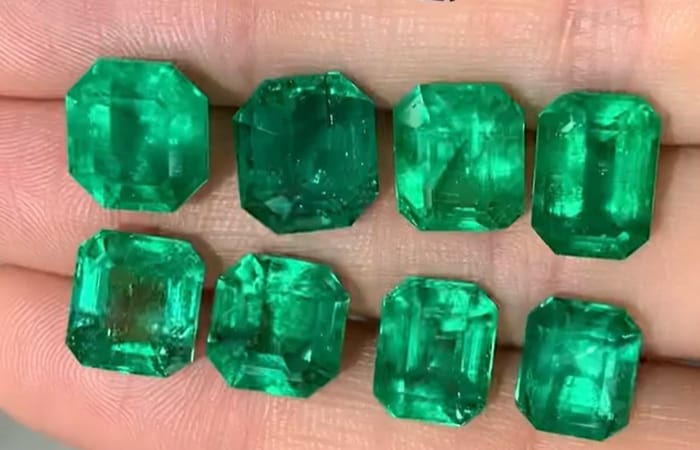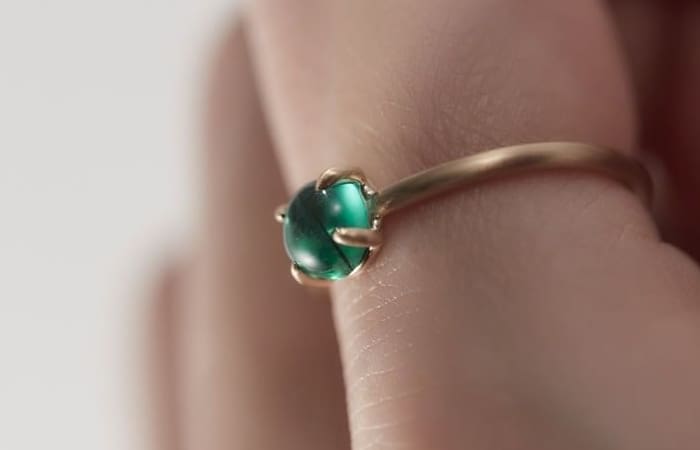Buying an emerald may be less technical compared to buying diamonds but it is still something that requires careful consideration. Emerald is an equally important gemstone that has been enjoying its popularity since the imperial era. This is made up of traces of matter and is often available in various colors that range from dark green to bluish-green.

Types of Emeralds
There are several types of emeralds that you can find in the market today, including:
- Trapiche Emerald
- Colombian Emerald
- Bahia Emerald
- Zambian Emerald
- Synthetic Emerald
- Natural Emerald
- Hydrothermal Emerald
- Brazilian Emerald
- Untreated Emerald
Experts study this stone based on four categories namely carat weightage, cut, clarity, and color. However, when shopping for emeralds based on quality, color is the most critical factor of them all.
Factors to Consider when Buying Emeralds
The price of an emerald varies a lot based on the stone’s quality, depending mostly on its clarity and color. The value of the stone will be higher if the color is richer and more saturated. Natural emerald stones are expected more valuable compared to their treated counterparts.
An emerald’s per-carat value will also increase according to its size. Rarer even than diamonds themselves, most natural emeralds can be found in Brazil, Zambia, and Colombia, with the highest price tags given to those that originate in the Colombian Muzo valley.
Natural emeralds cost as low as $200 up to $18,000 per carat depending on the quality. On the other hand, synthetic emeralds have a lower value than natural emeralds, the highest quality ones costing approximately $350 per carat.
Emerald stones are graded on the scale of B to AAA, with their quality mainly gauged by eye. The smallest sizes of emeralds range from 1mm up to 5mm, weighing 0.02 up to 0.50 carat. Stones weighing 1 to 5 carats are commonly used as center stones.
The most popular shapes of emeralds are octagon and round. Other shapes like oval and pear are also very effective at showcasing the color and size of emeralds. Consider a round shape if you want your emerald to be more sparkly.

Colors
Many emeralds are available in green color with faint yellowish or bluish hues. But there are two more color characteristics that you need to consider when trying to evaluate an emerald you plan to buy. These are the darkness and intensity of the color.
Darkness refers to the tone of an emerald’s color, a characteristic that varies from very dark to light green. Intensity describes the saturation of an emerald’s color. Some stones also appear duller while others boast of a more vivid intense green.
When buying an emerald, always look at both the darkness and intensity of its color. While darkness is mainly a matter of personal preference, you need to remember that the darkest emeralds might not necessarily be the priciest.
The truth is that color intensity is much more important. The higher the color intensity is, the higher the stone’s value will be. The most valuable emerald has a strong and moderately dark green color.
Clarity
Clarity pertains to the visibility, number, and size of the flaws present in an emerald. Inclusions are the internal flaws that naturally occurred during the formation of the gemstone.
It is expected for an emerald to have inclusions, some of which are visible. You also need to note that if an emerald doesn’t have any inclusions, it is probably fake, or one made in a lab.
Inspect an emerald with the naked eye when evaluating its clarity and check if it appears clean. Emeralds shouldn’t have readily noticeable flaws that spoil the appearance of the stone.
Inclusions in emerald should generally not be so big to the point that it detracts from the stone’s appearance. Having numerous too-large inclusions can compromise the structure of the stone and make it prone to breaking.
Stay away from emeralds with inclusions too close to the surface, particularly when the flaws are in the form of long cracks and lines. These inclusions can make the stone susceptible to damage.
An emerald is considered more valuable if it has fewer and less visible inclusions. Pick a stone with either barely visible or invisible inclusions to the naked eye and avoid stones with heavy inclusions as these can break easily.

Cut
It is ideal for an emerald to be cut symmetrically with the same facets that allow for paramount brilliance and color. When cut too deeply, the emerald will appear too dark as light escapes on the side. On the other hand, if the cut is too shallow, the stone will not look brilliant because the light will end up lost at the stone’s bottom part.
Carat Weight
Carat weight will obviously help determine an emerald’s price, with a 4-carat stone being pricier than a 1-carat stone, all the rest of the factors being the same and equal.
However, carat weight doesn’t really play a big role when it comes to the pricing of emeralds. The stone’s color is the primary interest here, followed by clarity, cut, and finally, the carat weight.
Experts agree that buying a smaller emerald with an outstanding color quality is better than getting a bigger one with poor color quality. Take note that there will also be a significant jump in price when you hit 1 carat because on average, it takes the removal of 5 tons of dirt to get a gem-quality emerald o more than 1 carat.
Setting
The mounting an emerald is set in determines the exposure of its surface to occasional bumps and hits that might end up damaging the stone. To ensure the best level of protection, emeralds should be set in a V-prong setting or bezel setting.
Conclusion
Emeralds have many exceptional qualities. However, colored stone experts generally agree that more than anything else, emeralds are all about color. For thousands of years, emeralds have been the standard for green among other colored stones.
Just like other colored stones, a well-trained eye is necessary to recognize the often-subtle variations that can cause substantial differences in the value of an emerald, which is especially true in higher quality stones.



